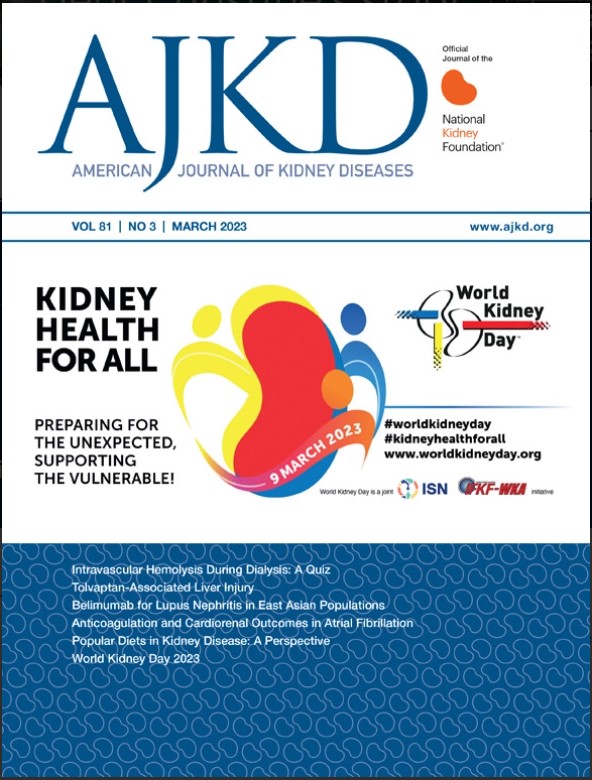常染色体显性多囊肾病和Alport综合征的肾囊肿:两个说明诊断挑战的家族病例。
IF 8.2
1区 医学
Q1 UROLOGY & NEPHROLOGY
引用次数: 0
摘要
常染色体显性多囊肾病(ADPKD)是最常见的遗传性肾脏疾病,可导致肾囊肿、肾脏增大和肾衰竭。我们报告了一名最初被误诊为ADPKD的男性患者,部分原因是他的家族史,后来被诊断为由COL4A4和COL4A5致病性变异引起的遗传性Alport综合征(AS)。随后,他的三个姐妹被诊断为基因性AS,其中一个先前被诊断为ADPKD,原因是PKD1的新杂合致病性变异。她经历了一个不寻常的ADPKD患者的临床过程,肾功能急剧下降,持续的显微镜下血尿和明显的蛋白尿。通过这些病例,我们旨在强调除ADPKD外肾囊肿的其他遗传原因,描述这些病例的表型特征如何不能完全解释其已知的基因型(导致替代或额外的遗传诊断),并说明准确的遗传诊断对于级联筛查的重要性。本文章由计算机程序翻译,如有差异,请以英文原文为准。
Kidney Cysts in Autosomal Dominant Polycystic Kidney Disease and Alport Syndrome: Two Familial Cases Illustrating Diagnostic Challenges
Autosomal dominant polycystic kidney disease (ADPKD) is the most common hereditary kidney disorder and leads to the formation of kidney cysts, kidney enlargement, and kidney failure. We present a male patient initially misdiagnosed with ADPKD, partly based on his family history, who was later diagnosed with digenic Alport syndrome caused by pathogenic variants in COL4A4 and COL4A5. Digenic Alport syndrome was subsequently diagnosed in 3 of his sisters, one of whom had previously been diagnosed with ADPKD, due to a de novo heterozygous pathogenic variant in PKD1. She had experienced an unusual clinical course for a patient with ADPKD, with remarkably rapid kidney function decline, persistent microscopic hematuria, and overt proteinuria. Through these cases, we aim to highlight alternative genetic causes of kidney cysts beyond ADPKD, describe how the phenotypical features in these cases were not fully explained by their known genotypes (leading to alternative or additional genetic diagnoses), and illustrate the importance of accurate genetic diagnoses for cascade screening.
求助全文
通过发布文献求助,成功后即可免费获取论文全文。
去求助
来源期刊

American Journal of Kidney Diseases
医学-泌尿学与肾脏学
CiteScore
20.40
自引率
2.30%
发文量
732
审稿时长
3-8 weeks
期刊介绍:
The American Journal of Kidney Diseases (AJKD), the National Kidney Foundation's official journal, is globally recognized for its leadership in clinical nephrology content. Monthly, AJKD publishes original investigations on kidney diseases, hypertension, dialysis therapies, and kidney transplantation. Rigorous peer-review, statistical scrutiny, and a structured format characterize the publication process. Each issue includes case reports unveiling new diseases and potential therapeutic strategies.
 求助内容:
求助内容: 应助结果提醒方式:
应助结果提醒方式:


